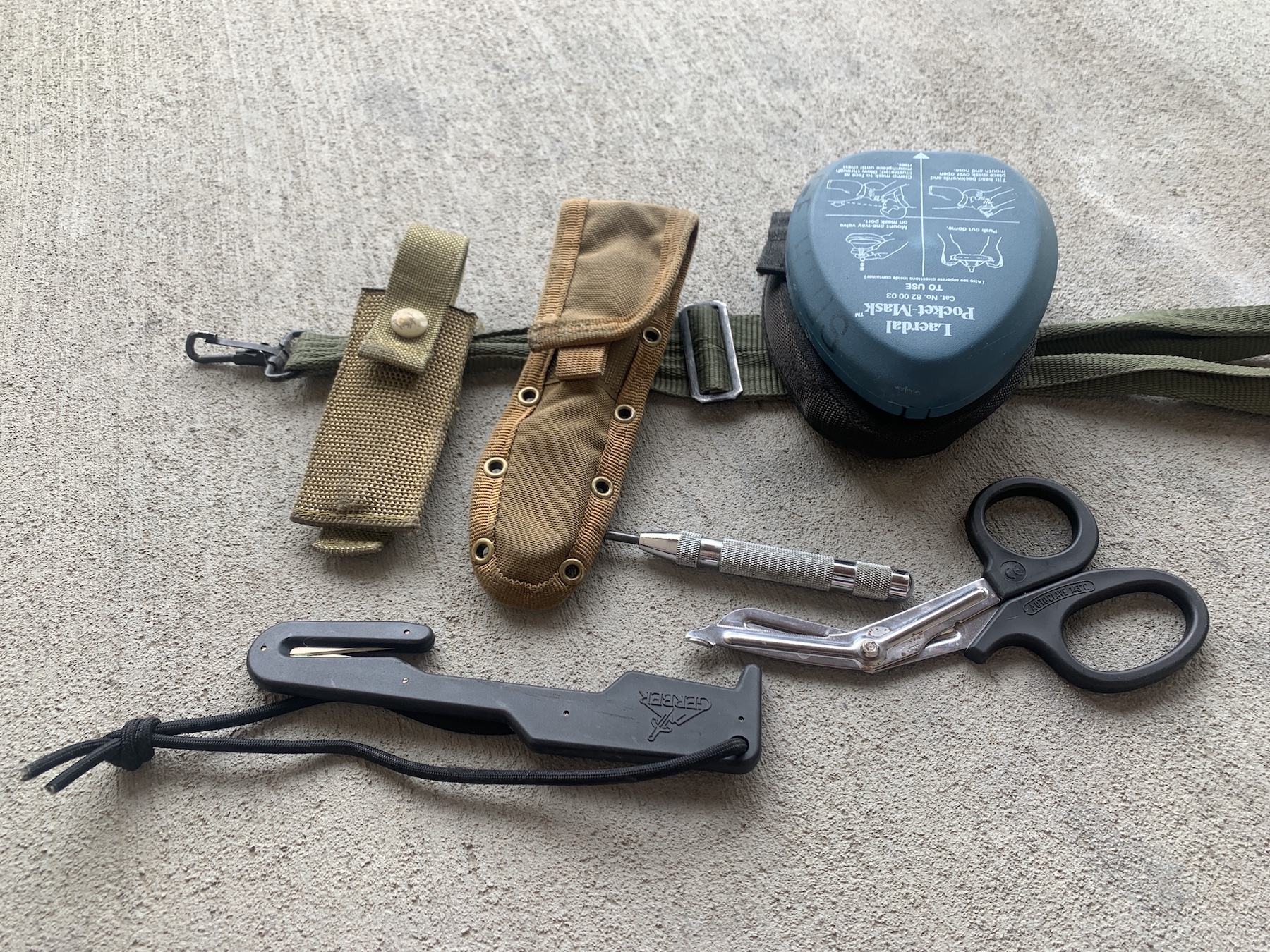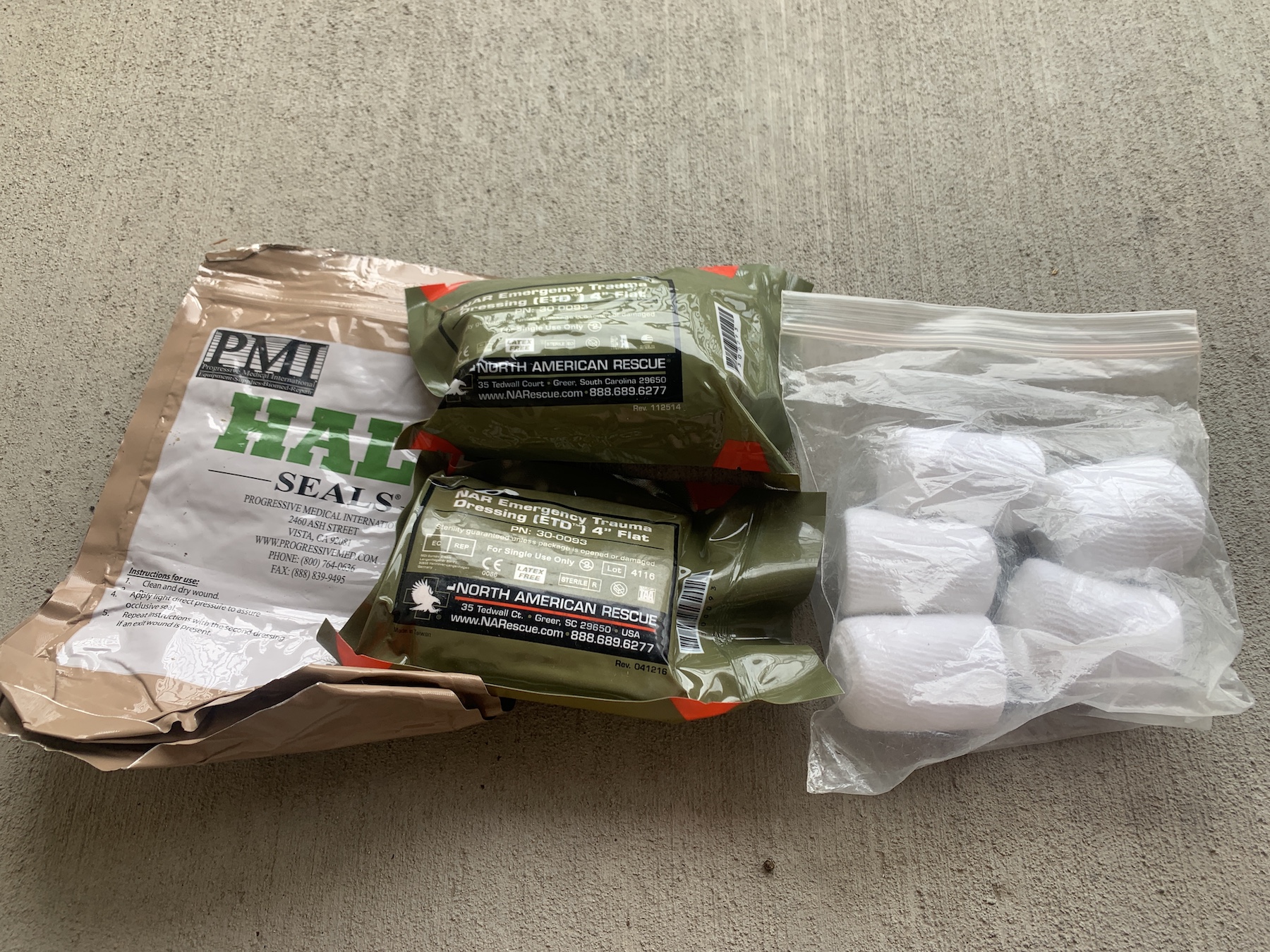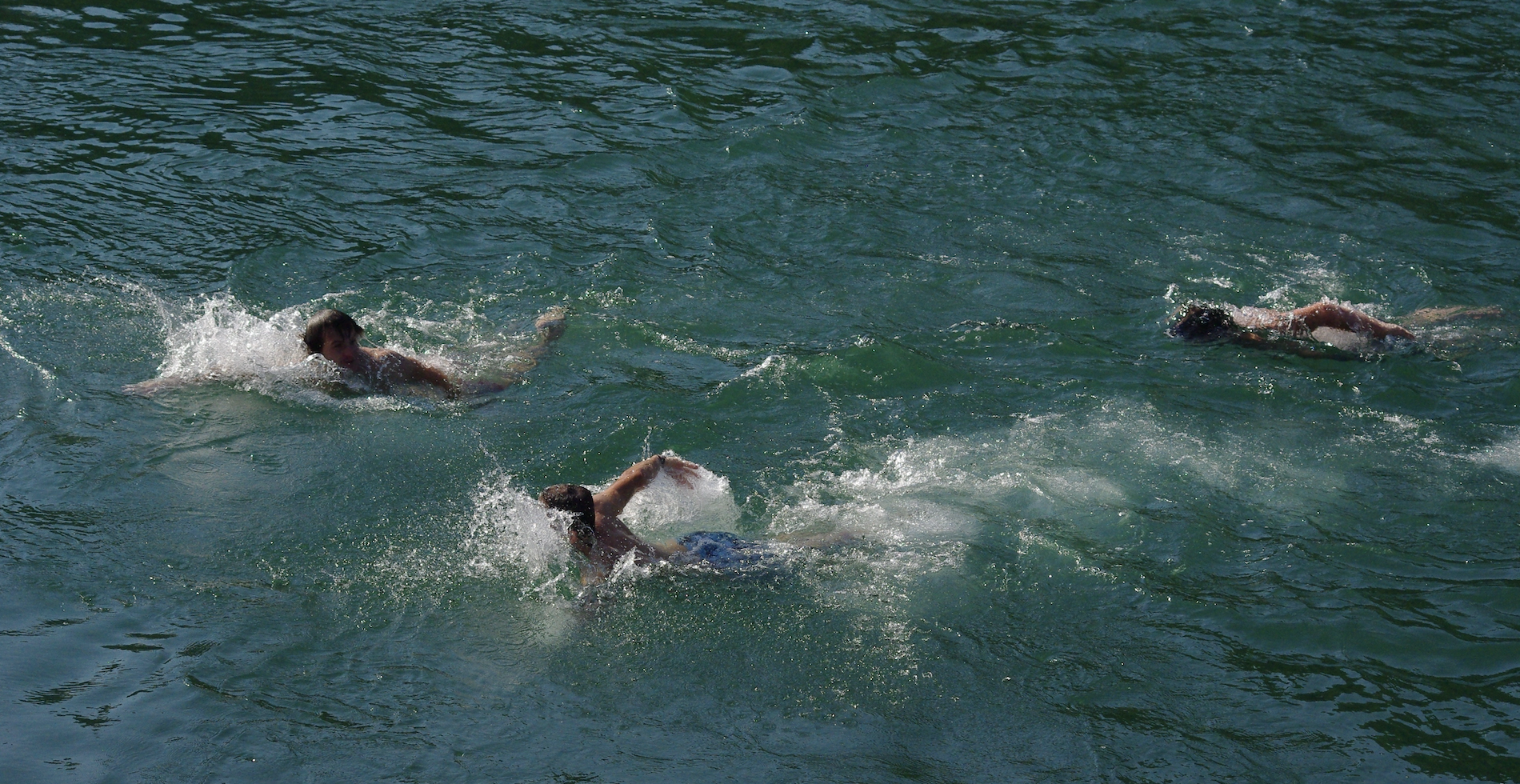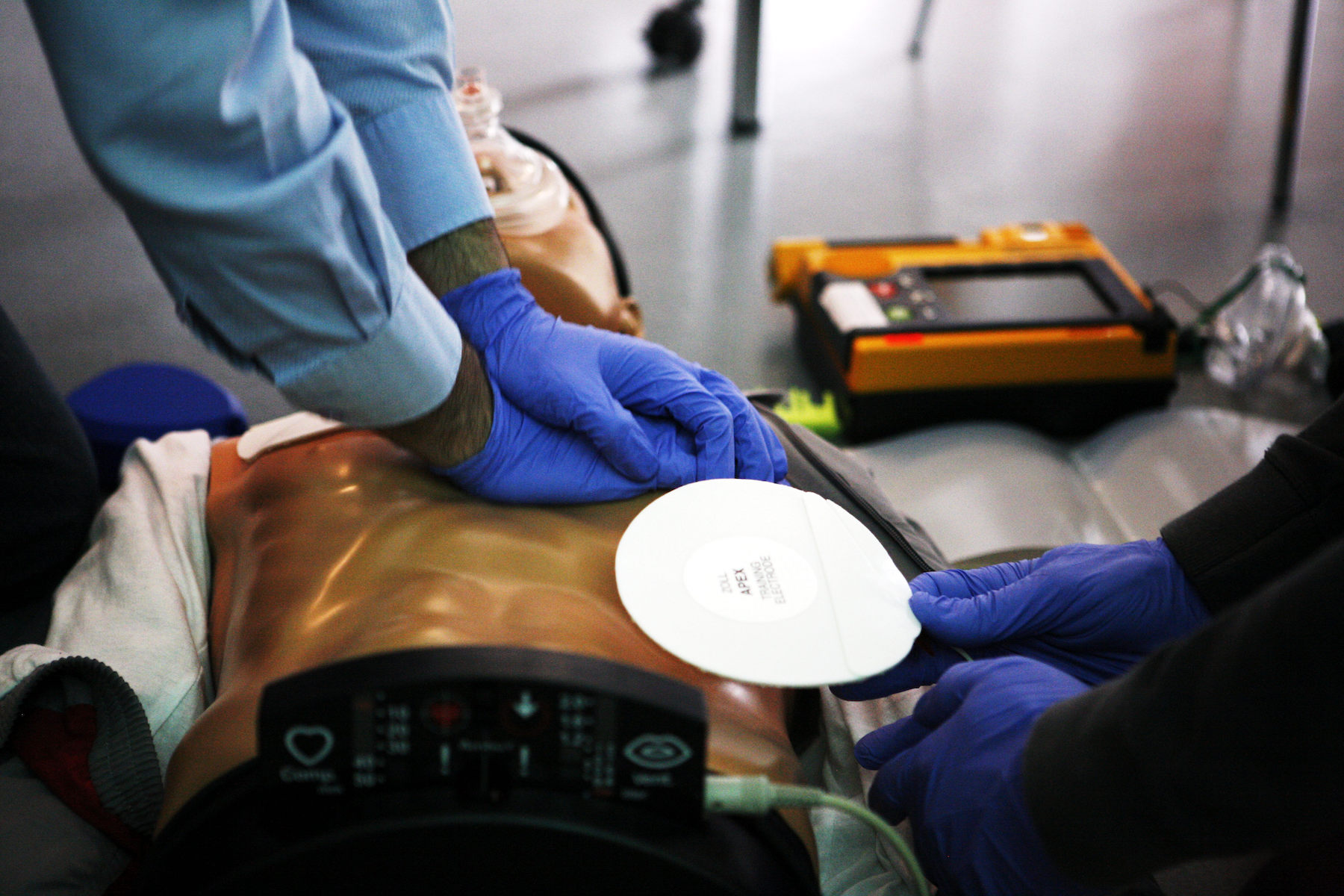
9tools
Trauma shears, seatbelt cutter, window punch, and a CPR mask - you might need any one of these.
Summer is coming, and most people are outside just a wee bit more. Even though we missed covering Stop the Bleed during May, the material is important enough to be covered anytime.
Obligatory caveat: I’m not a doctor, a nurse, a physician’s assistant, a paramedic, or even a currently certified emergency medical technician (though I was for many years).
We are driving, walking or hiking, camping, boating, and hitting the water a lot more – whether at a pool, a river, a lake, or the ocean.
Unfortunately, all those can give you plenty of chances to practice your foundational medical skills. More importantly, they give you a reason to keep them updated.

Trauma dressings, gauze rolls, and chest seals – all work to keep blood in the body where it belongs.
Since I mentioned Stop the Bleed first, I will start there. Blood performs best when it is inside your body.
The general rule is this: if you have a major bleed on an extremity, a limb, use a tourniquet. Learn where to apply it and, as importantly, when to do so;
You must seal the chest (or back, etc.) for your upper body. Rather than using the wrapper on a cigarette pack or the wrapper from a bandage (hey, that’s what the Army taught me decades ago), there are some well-designed commercially available ones out there;
If it is a junction, the place where a limb attaches to the torso, you pack it. How, what? You start pushing it into the wound using a roll, or more, of gauze. Not the whole roll at once, but you will work it all in a bit at a time.
But what about plain old direct pressure? Not every cut or penetrating wound needs a tourniquet.
Elevating the injured limb? Yup, same as with direct pressure. These two things alone will handle minor bleeding.
Unfortunately, being around water – regardless of the nature of it – can lead to drowning. Drowning does not look like what we think it does. A check of the Mayo Clinic’s website led to information on this. They note that, often, you will not see a struggle or waving arms. They attribute that to the drowning victim wanting to push themselves out of the water so their hands and arms go down. Some who is drowning will be face down in the water or submerged just a bit below the surface.
In addition to drowning, you might have to do cardiopulmonary resuscitation (CPR) on someone for several reasons. Are you aware of the current recommendations? What about the differences in numbers and rates for adults, teenagers, children, and babies?
Additionally, with the prevalence of Automatic Electronic Defibrillators (AEDs), are you up to speed on them? Would you know how to use them if it was on the wall nearby? Don’t be afraid to learn. The manufacturers have done an excellent job in terms of making them user-friendly.
What about broken bones? They are a common occurrence. Not just for kids; adults can experience them too. Wherever you are – that includes in your car, especially during a crash.
Do you know how to splint them? Versus when to secure the injury as you have found it.
After splinting it, are you going to check for a distal pulse? The one on the far side of the break. If someone around you breaks their femur and you are not standing on a road, have you considered how you would splint that?

Small kits are nice, but do you have enough to care for multiple injuries? What about multiple victims?
I would guess that most of you reading this have some sort of individual first aid kit (IFAK) for treating trauma inflicted on you or someone you care about. Great! But what about all the other injuries? Or more than one person? Does your kit have enough supplies for a second injury or other people?
There are many commercially available kits out there. Have one at home and at least one more in each vehicle. Do your research and then buy directly from a reliable retailer. Please do not use eBay; there have been far too many examples of bad-quality knockoffs being offered for sale there.
Even though I’m retired, I still work part-time for my old office as an extra-help deputy working in the courts. That means I must keep up with the training mandates. I am still taking CPR and AED classes; medically, we are doing trauma care classes and regular first aid.
For many years, I stayed current on all those skills, but I paid much more attention to the trauma care side. Then during the 2017 Tubbs Fires that devastated my county, three of my co-workers (two of whom had been trainees of mine) and I helped paramedics and firefighters save a man’s life doing a very extended session of CPR.
Please keep up your skills – regardless of your job. The life you save may be someone you care about!
RESOURCES:
Training –
Equipment –




















